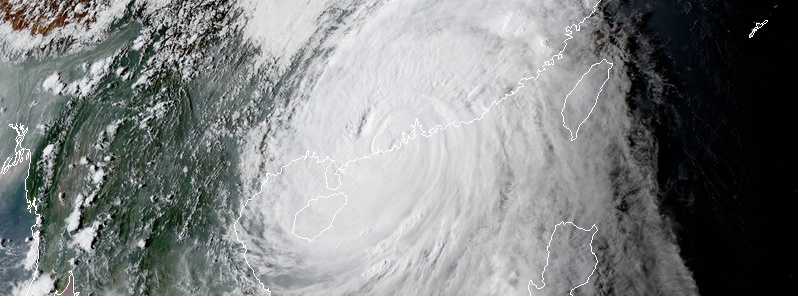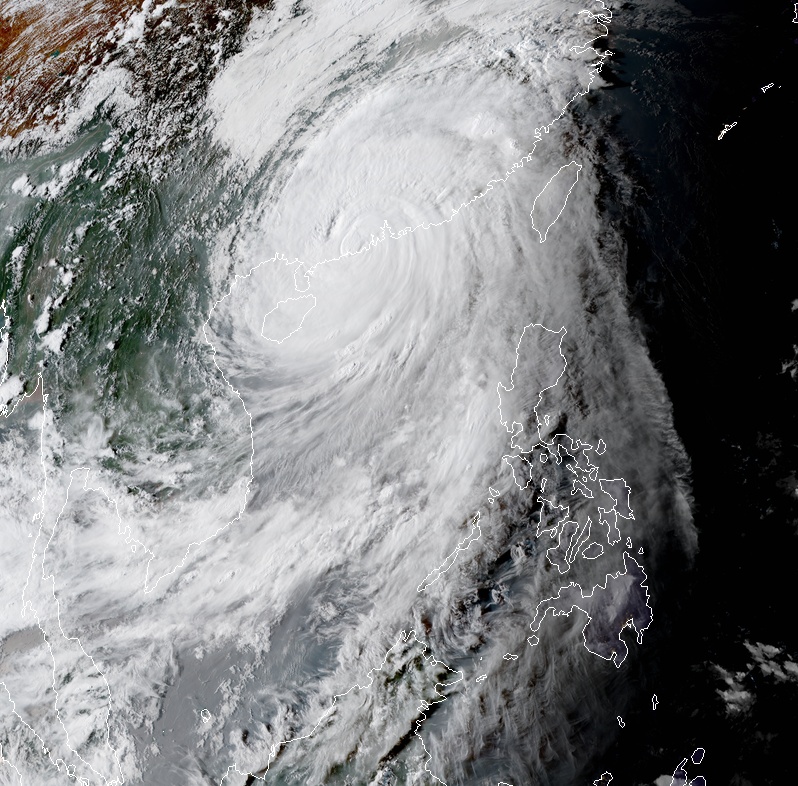Typhoon “Mangkhut” wreaks havoc across Hong Kong, China evacuates more than 3 million people

Typhoon "Mangkhut" lashed Hong Kong and made landfall in southern China's Guangdong Province on September 16, 2018, after leaving more than 100 people dead in the Philippines. At least 4 people were killed in the province before the storm exited into neighboring Guangxi. China evacuated more than 3 million people ahead of the typhoon.
The intensity of the storm required a typhoon signal No 10 to stay in place for 10 hours, the Hong Kong Observatory said.
Mangkhut produced damaging winds of up to 173 km/h (107 mph) and gusts of up to 223 km/h (138 mph) across Hong Kong, ripping off roofs and scaffolding from skyscrapers, shattering windows, shaking high-rise buildings and causing serious flooding in low-lying areas. It is one of the strongest typhoons to hit the city.
Officials said the storm produced record levels of storm surge, with floodwaters reaching their highest levels since 1904.
The maximum storm surges recorded at Quarry Bay and Tai Po Kau were 2.35 m (7.5 feet) and 3.38 m (11 feet) respectively, higher than the 1.77 m (5.8 feet) surge bought by Typhoon "Wanda" in 1962 to Quarry Bay, and the 3.23 m (10.6 feet) surge in Tai Po Kau under Typhoon "Hope" in 1979, SCMP reports.

Typhoon "Mangkhut" over China's Guangdong Province at 12:00 UTC on September 16, 2018. Credit: JMA/Himawari-8, RAMMB/CIRA
John Lee Ka-chiu, Secretary for Security, described the damage 'serious and extensive,' and said the number of calls for help, or reports of injury, was as much as five times higher than when Typhoon "Hato" hit Hong Kong in August 2017.
The police received 20 000 calls for help on Sunday, September 16, compared to about 6 000 they receive on a normal weekend. Nearly 900 flights were canceled and public transport paralyzed.
#HongKong suffered widespread infrastructural damage as #Typhoon #Mangkhut lashed across the city on Sunday. https://t.co/QmsE42QfFI pic.twitter.com/BPR56FAQWf
— SCMP News (@SCMPNews) September 16, 2018
#TyphoonMangkhut has left #HongKong, but it left its devastating mark in the city. https://t.co/RLNehW4sHj pic.twitter.com/zryTMq3GKm
— SCMP News (@SCMPNews) September 17, 2018
#TyphoonMangkhut wreaked havoc at the Shek O Country Club, leaving parts of its golf course completely submerged. https://t.co/zxC7BIqlXx pic.twitter.com/vTcjcrdXSA
— SCMP News (@SCMPNews) September 17, 2018
"We received about 1 500 reports of fallen trees on Sunday, more than double the figure caused by Hato," senior science officer Lee Suk-ming said Monday. "There were also 400 to 500 reports of broken windows caused by Mangkhut, three times the figure caused by Hato."
Latest figures mention 394 people injured in Hong Kong, almost four times as many as during Hato.

Typhoon "Mangkhut" making landfall in China's Guangdong Province at 09:00 UTC on September 16, 2018. Credit: JMA/Himawari-8, RAMMB/CIRA
The storm made landfall in Guangdong province around 09:00 UTC (17:00 local time) with wind speeds of 162 km/h (100 mph), producing 10 m (32.8 feet) waves.
At least four people were killed in the province, China's state television reported. Three died after they were hit by falling trees in Guangzhou while another was killed when a building collapsed in Dongguan.

Featured image credit: JMA/Himawari-8, RAMMB/CIRA

Commenting rules and guidelines
We value the thoughts and opinions of our readers and welcome healthy discussions on our website. In order to maintain a respectful and positive community, we ask that all commenters follow these rules:
We reserve the right to remove any comments that violate these rules. By commenting on our website, you agree to abide by these guidelines. Thank you for helping to create a positive and welcoming environment for all.